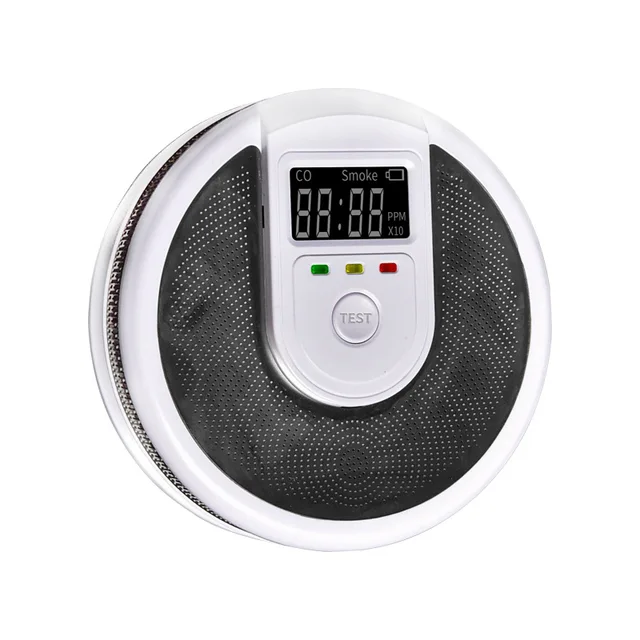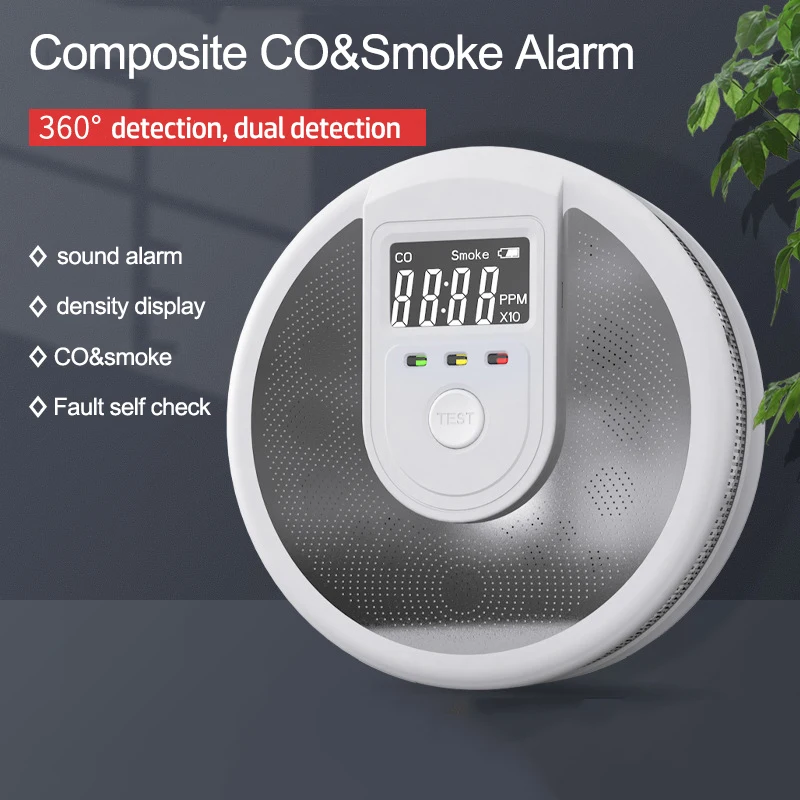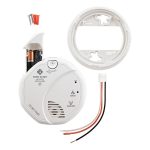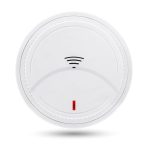Reasons Why Smoke Alarms Beep
False Alarms and Their Implications
Smoke alarms beep to alert to danger, but sometimes they beep when there’s no fire. False alarms can happen for many reasons. Steam from showers or burnt food can set them off. They are important to keep us safe but can be a nuisance if they beep too much.
Identifying Smoke or Fire in Your Home
When smoke alarms beep loudly, they might detect real danger. Always check your home first. Look for signs of smoke or fire. Beeping can save lives, so take it seriously every time.
Faulty or Incorrectly Installed Smoke Detectors
Sometimes smoke alarms beep because they don’t work right. Maybe the battery is low, or it was put in wrong. If it keeps beeping for no reason, you might need to get a new one. Check it well and follow the steps to fix it. Always make sure it works right to stay safe in your home.

Checking and Replacing Smoke Alarm Batteries
When to Replace Smoke Alarm Batteries
It’s vital to know when your smoke alarm batteries need changing. A beeping sound often signals low batteries. Replace batteries once a year, or when the low battery signal beeps. For long-life batteries, follow the manufacturer’s instructions. If you’re unsure, check the manual. It’ll guide you on when to swap out batteries. Remember, smoke alarms only work if the batteries do.
Understanding the Beep Patterns for Battery Replacement
Smoke alarms have unique beep patterns to alert you. A single chirp every minute often means the batteries are low. A loud, continuous alarm indicates smoke or fire. Don’t ignore these sounds. They’re designed to keep you safe. Learn these patterns. They could save your life. Replace batteries immediately if you hear the low battery chirp. It’s a simple step. But, it’s one that’s crucial for your smoke alarm to function well.
Smoke Alarm Maintenance for Optimal Performance
Proper maintenance of your smoke alarm is essential for it to work correctly. Keep it clean and test it regularly.
Cleaning and Dusting Your Smoke Detector
Dirt and debris can block sensors and cause false alarms. Gently clean your smoke detector with a soft brush.
The Importance of Regular Smoke Alarm Testing
Test your smoke alarm monthly. Press the test button to ensure it’s loud and clear. Replace it if it’s not working.
The Lifespan of Smoke Alarms and Replacement Guidelines
Smoke alarms don’t last forever. They need replacing every 10 years. Stay safe and replace outdated alarms.
Installation Tips for Smoke Alarms
Installing smoke alarms correctly is crucial for their effectiveness. Here’s how to do it right.
Best Locations for Smoke Alarm Installation
Smoke alarms work best when placed on ceilings in hallways and landings. These spots are ideal as they’re the paths you would take to exit during a fire. Consider placing alarms in all living spaces too, including bedrooms and living rooms.
Avoiding Installation in Problematic Areas
Avoid putting smoke alarms near bathrooms or kitchens to prevent false alarms from steam. Place them at a distance from air vents, windows, or fans that could interfere with their operation.
Compliance with Legal Requirements for Landlords
Landlords in the UK must follow strict rules. Install smoke detectors as outlined in British Standard 5839-6:2019. Ensure they work at the start of each new tenancy. After that, it’s up to tenants to keep them in check, ideally testing them once a month.

Troubleshooting Common Smoke Alarm Issues
Smoke alarms provide essential safety, but when they malfunction, it can be challenging. Troubleshooting your smoke alarm helps you resolve issues quickly and keep your home safe.
Resetting Your Smoke Alarm
Resetting your smoke alarm is easy. First, try pressing the reset button. If that doesn’t work, turn off its power at the circuit breaker. Wait a few seconds, then turn it back on. This can clear any minor errors. If it still beeps, it may need new batteries or a full replacement.
Remember to check the batteries first as low power is a common cause of beeping. Always have replacement batteries on hand. If the issue persists after a battery change, consider the smoke alarm’s age. Is it older than 10 years? If so, it’s time for a new one.
Reading and Understanding the User Manual
Always keep the user manual for reference. Each smoke alarm has its own set of instructions. The manual provides specific troubleshooting steps. Look for a section on ‘Troubleshooting’ or ‘Common Issues’. It usually lists reasons for beeping and how to turn off a smoke alarm. It also explains beep patterns which are crucial to understand.
The manual can guide you on resetting the alarm, replacing batteries, and testing it. Follow the manual to maintain optimal function. If you’ve lost the manual, search online for a digital copy. Most manufacturers provide them on their websites.
Know how to turn off a smoke alarm and keep your user manual within reach. These tips ensure your smoke alarms stay in working order. They help you act fast and remain calm in case your smoke alarm starts beeping unexpectedly.
Advancements in Smoke Alarm Technology
The world of home safety is evolving with smart technology. Smoke alarms are advancing too. These smarter alarms make managing home safety simpler and more efficient. Here are some advancements in smoke alarm technology.
The Convenience of Smart Smoke Detectors
Smart smoke detectors bring new levels of comfort to home safety. They connect to your home network. This lets you receive instant alerts on your phone or tablet. Imagine knowing there’s a problem, even when you’re not at home. You can act fast and get help if needed. No need to worry about beeping alarms when you’re away.
Remote Control and Wi-Fi Connectivity
You can control these smart devices remotely, which is a huge plus. Use your smartphone to silence alarms or check the status of your detectors. Wi-Fi connectivity means you’re always in the loop. It’s easy to stay informed and respond to alerts. Regular detectors can’t offer this kind of convenience.
Choosing Heat Detectors for Kitchen Areas
Heat detectors are a smart choice for kitchens. They’re less likely to set off false alarms from cooking smoke. They detect rapid rises in temperature, signaling possible fires. It’s smart to use heat detectors in the kitchen. This helps avoid those annoying false alarms.
Integration with Home Automation Systems
Modern smoke alarms can now integrate seamlessly with other smart home devices. This means they can work alongside security systems, smart lighting, and even smart thermostats. For example, if a smoke alarm detects smoke, it can trigger smart lights to illuminate escape routes or send alerts to your security system. This level of integration enhances overall home safety and provides a coordinated response in emergencies.

Voice Alerts and Personalized Notifications
Gone are the days of generic beeping alarms. Many new smoke detectors now feature voice alerts that specify the type of hazard detected, such as smoke or carbon monoxide. This personalized notification system helps homeowners quickly understand the situation, reducing panic and enabling more effective responses. Additionally, users can often customize alerts based on their preferences, tailoring notifications to their specific needs.
Advanced Sensor Technology
The latest smoke alarms utilize advanced sensor technology, including dual-sensor systems that combine photoelectric and ionization detection methods. This ensures a more accurate response to different types of fires—smoldering fires and fast-flaming fires—by optimizing the detection capabilities. With these advancements, the likelihood of false alarms is significantly reduced, making home safety more reliable.


